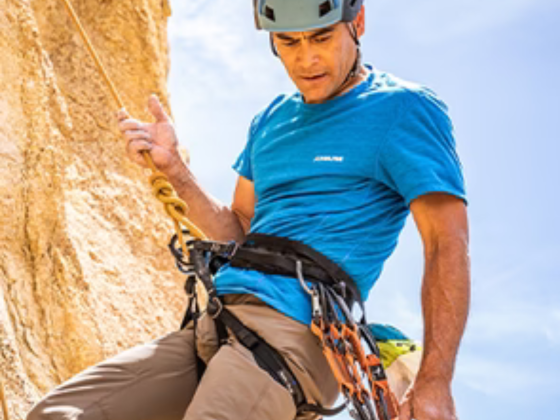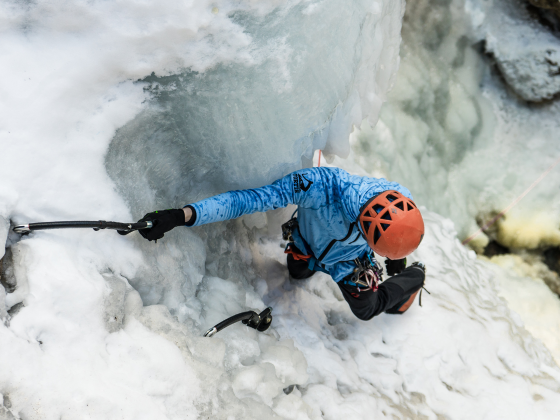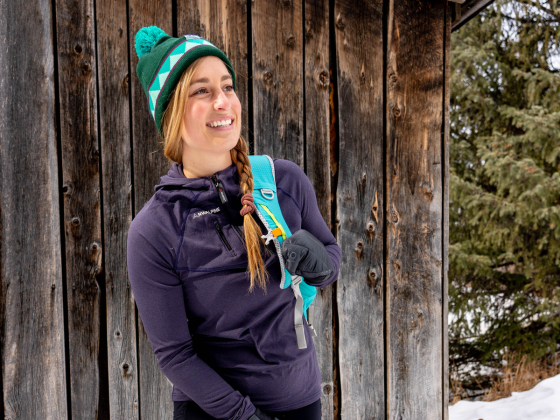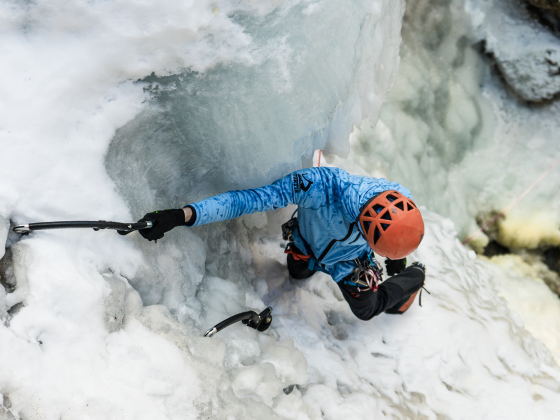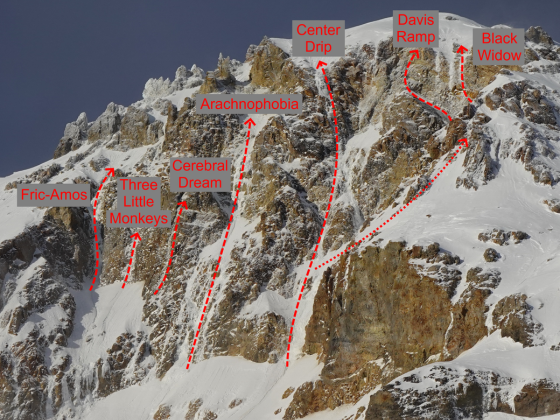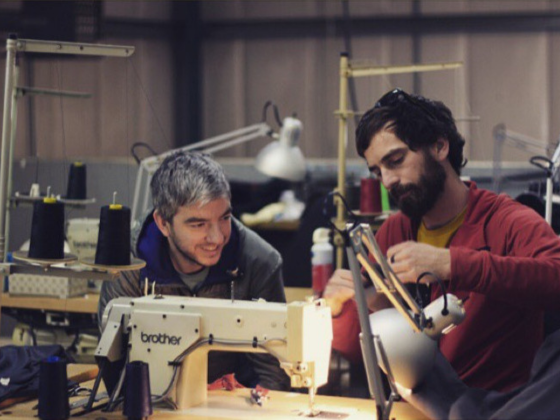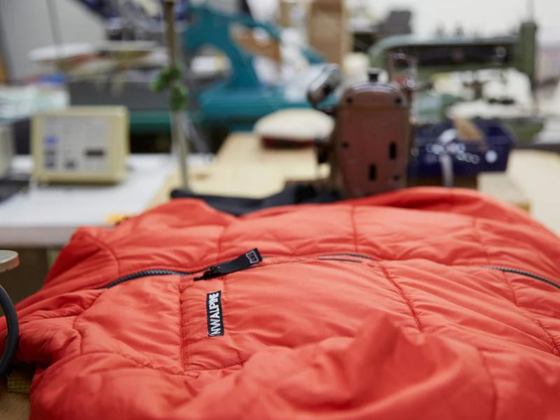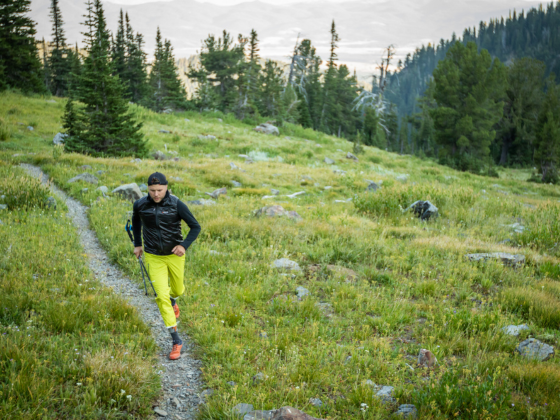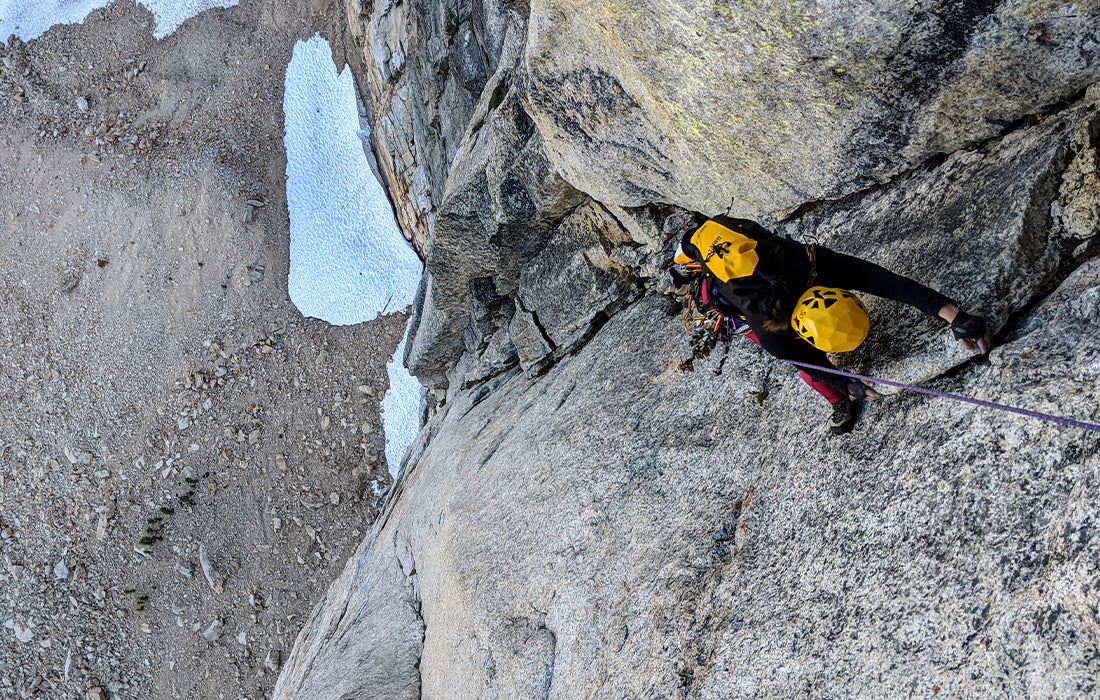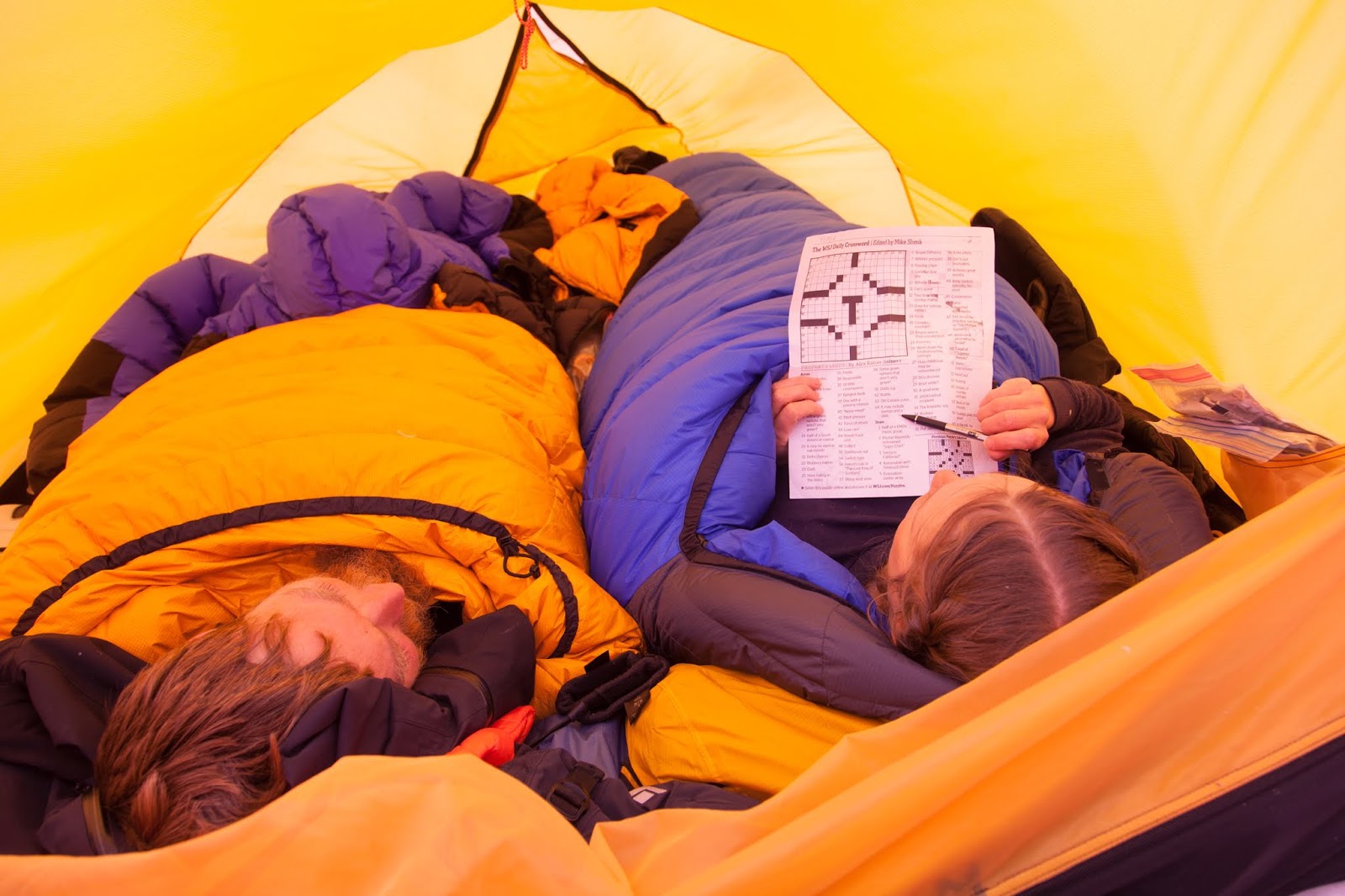A quick look at the Fastest Known Time (FKT) website shows Jason Hardrath as #1 on the leaderboard with 73 FKTs, and the number will surely only keep climbing. He modestly told me that he is known by some as the “FKT King”. No one else is chasing FKTs at such a pace, especially on such big routes in the PNW. This summer alone, Jason has posted 12 FKTs. Of those 12, 3 included an infinity loop on Shasta, Mt. Hood, and Mt. Adams with barely over a week off between each outing. His focus right now is reaching 100 FKTs, a “nice round number”. When I asked him if he would continue past 100 he confidently said that he knows he won’t stop at 100 because he loves doing them too much: “You know that you love what you’re doing when you celebrate what you’ve accomplished by doing more of it”.
For those not acquainted with the terminology, an FKT is the fastest known time for completing a given trail or route. An example of a well known trail that people seek an FKT on is the Pacific Crest Trail. However, FKTs go well beyond established trails or routes. There are an infinite number of new routes that can be imagined and put forth as a challenge to others: linking peaks, traverses, huge cross country treks, you name it. A common distinction for FKTs is whether the effort is supported, self-supported, or unsupported. Supported meaning you have a friend or team of people bringing supplies to you throughout your effort; self supported where you set up supply caches for yourself; and unsupported where you bring everything you’ll need with you. There are also many repeated FKT route variations that can be overlaid on a new area to develop a challenge. Popular variations are picnics (biking, swimming, and mountaineering), lollipops (out and around), sea to summit (start with bike tire in water, bike to mountain, and then summit), and infinity loops which will be explained in greater detail later in this article.

Jason's Strava track for the biking portion of his recent sea to summit on Rainier.

Jason's Strava track for the running/climbing portion of his recent sea to summit on Rainier.
If it's not already apparent, Jason lives a life of constant motion. Just two days after posting his 72nd FKT, a sea to summit on Rainier he got on the phone with me to give some insight into his passion for FKTs, his mission as an athlete and teacher, and details of how he executes infinity loops in the Cascades.
As a child, Jason was diagnosed with ADHD and he quickly understood that movement was essential to him. If he couldn’t do anything else he had to at least be able to move. He started out skating and then in high school he began running and made it onto the varsity track team. His goals progressed to getting onto a college track team, then marathons, triathlons, ultras… and he’s still seeking out the next big goal. Jason began running as a way to find his identity and a means to express himself. His main driver for progressing to larger and larger goals is his desire to develop himself to his fullest potential, and he has an unbounded enthusiasm and love for what he does. Jason told me, “Even if no one in the world cared about what I was doing I would still be chasing down FKTs for the pure joy of it”. He also remarked that it is through his fitness and knowledge of himself and his environment that he has found his freedom. He likes to tell people that “fitness is freedom” because it really enables you to do some otherworldly things.
Jason lives two lives, one as an ultra athlete and the other as a P.E. teacher and mountain guide on Shasta. During the school year he shares his love for fitness with students in Klamath Falls, Oregon. As a teacher, he lives for “aha” moments where people break through mental or physical barriers and believe in themselves. His athletic career and teaching bear a strong influence on each other. He finds that each new experience in the mountains contains lessons that he can pass on to his students. The greatest lesson he hopes to impart on them is that anything worthwhile is not easy: “If it's uncomfortable that is the way to go because that is where growth occurs”. He jokes that he teaches to pay the bills but he obviously infuses the same passion he has for the mountains into his teaching. Jason’s personal mission is to use his athleticism and brand relationships as a platform to instigate action, or self actualization in others. By encouraging personal growth through the medium of physical and mental fitness, he hopes to help people live their fullest lives and discover themselves in a healthy and positive way.
Infinity Loops
The Rainier Infinity Loop was a challenge conceived by the late Chad Kellogg. The route involves climbing Mt. Rainier on one side and then descending on the opposite side. After that, you run around the Wonderland trail back to your starting point then ascend and descend the mountain again. Finally, you run back to the start on the Wonderland trail going the opposite way. Chad Kellogg passed before he could realize his vision so the Rainier Infinity Loop ended up being a legacy that others carried on and even expanded upon. The infinity loop concept has been applied to other mountains such as Hood and Adams. Jason likes that the infinity loop approach allows you to see all aspects of a mountain and summit it twice in a single outing. It’s as if you’re compressing time.

The Rainier Infinity Loop. GPS track courtesy of fastestknowntime.com
Infinity loops are big, daunting, challenges. They require a lot of miles to be covered and have enormous elevation gain and loss. Inevitably, you will find yourself, “going through the valley of the shadow of death”, as Jason puts it. Jason shared with me a quote from one of his mentors that has stuck with him:“A human being is like a tube of toothpaste, you don’t find out what’s truly inside until they get squeezed”. Meditating on this throughout the years, Jason wanted to know what inner core of himself would be revealed under great pressure. He wondered if in those moments he could live up to the values and ideals that he thinks he embodies. Jason found a way to test this in the Rainier Infinity Loop challenge
In 2019 Jason decided to attempt the Rainier Infinity Loop. It would be the first infinity loop he had ever tried. The largest effort he’d done previously was a 100 mile ultra but this would be 130 miles. Furthermore, he’d only just climbed Rainier via the Disappointment Cleaver for the first time a week prior to his Infinity Loop attempt. He hadn’t scouted the Emmons Glacier descent either. There were some unknowns and it was a daunting challenge but this convinced him even more to go for it. His training targets and time calculations from previous efforts told him that he was ready but there was only one way to find out for sure. As he tells his students, “when something is simultaneously scary and exciting you should go for it”.
On August 14, 2019 at 8:23 AM on the dot, Jason set out on his self-supported attempt for the FKT of the Rainier Infinity Loop. For the first day and a half he was moving fast and was on track for the FKT. Starting out on something like the Rainier Infinity Loop, Jason said he knows that, “it hasn’t really started until it becomes hard”. To make the enormity of the endeavor manageable mentally he says he took it one mile at a time and tried to keep himself psyched for what came next, be it a particular section of the route, or a transition from easy running to scrambling. The most important thing of all was being able to find joy in discomfort, to become ok with it and be able to exist in that space in control.
During the tail end of his infinity loop push Jason found himself on a more mellow portion of the Wonderland trail but his pace could only hit 14:30. He knew he should be going much faster but his body was absolutely exhausted. The night before he had slept only 90 minutes. True to form, Jason quickly realized that his only option to get the FKT at this pace would be to keep pushing through and forego any sleep on his second night. Continuing on, his head started to droop, and he occasionally stumbled from side to side, fighting off the overwhelming urge to lay down right there in the middle of the trail. In this moment his eyes welled up, not out of sadness, but bliss. He had been squeezed but had held firm to his commitment. In that moment he knew that he embodied tenacity, he was actualizing the person he wanted to be.
At 4:03:45 PM on August 16th, Jason completed the Rainier Infinity Loop. 2 days, 7 hours, 40 minutes, and 52 seconds after starting, Jason had clinched the FKT with a lead of over 3 hours. This FKT also marked #26 on the road to 100 FKTs.
Beta for Infinity Loops
Self-supported FKT attempts intuitively make sense because you have your car parked at the trailhead and can also set up your own tent aid station on the opposite side of the mountain. This is how Jason supported himself during his 2019 Rainier Infinity Loop FKT.
People often think on-mountain conditions are the limiting factor for planning an attempt but Jason says that a more important consideration is the circumnavigation conditions. Most of your time is spent travelling around the mountain rather than ascending or descending an on-mountain route. If its bone dry down low there can be a lot of loose rock and brush to contend with. If there is a lot of snow then it will be an interminable slog. Ideal conditions are good, firm snow and as much open trail as possible.
Gear
- Tailwind drink mix for all calorie and electrolyte needs
- Other snacks for a mental boost: salami, snickers
- UD 2020 FKT Vest
- 18 L storage, w/ ice axe loops, and pole storage
- UD FK Ultra trekking poles
- Petzl Ride axe
- BRS aluminum crampons (if needed)
- La Sportiva Blizzard shoes (often a one shoe quiver because of built in microspikes and integrated gaiter)
- Thin wind hoody
- Sun hoody
- Shorts and/or leggings
- Thin gloves
- Usually an extra layer for each part of the body
- SPOT tracker for SOS
- Cellphone for time stamped and geo stamped photos and as a backup nav system
- Garmin Forerunner 935 watch for gps track and nav

